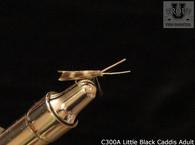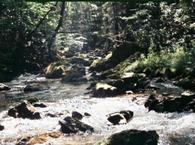
If you are in the back country and you should stray off the marked path, you would be smart to have a GPS receiver with you. They are small, portable devices that allow you to store the exact location of any point such as the location of your vehicle or the location of your campsite or the location of your fishing spots. More importantly, they can save your life by giving you the exact location of your vehicle, so there is no reason to be lost. However, there is a remote possibility that the device could fail due to low batteries or for some other reason, therefore it is wise to have a trail map or a topo map for back-up.
Another desirable feature of the portable GPS receiver is that they are capable of storing tracks. They can store your position as frequently as you desire using time like every minute or distance like every 50 feet. This will form a complete route for you to follow in reverse to leave the back country the way you came in. Also, at some later time you can retrace your steps to that favorite fishing location.
Most all of today's GPS navigators have some type of build-in maps. Some of these units contain base maps only while others have detailed maps installed in memory. Some of the most recent and best models have highly detailed topo maps contained within their memory.
After you return from the back country, you can even store your routes on your computer directly from your GPS navigator. Also, you can plan your backpacking adventure on your computer and download the details into your GPS receiver.
My friend James Marsh creates instructional videos for the new models of GPS units for sale at Bennett Marine and he tell me that if you purchase one for back country hiking that you purchase one that has WASS capability. To make it short, WASS makes the receiver much more accurate. In general a receiver with WASS should be able to compute your
position to within ten feet versus fifty feet without WASS. It also makes the computation of elevation much more accurate.
position to within ten feet versus fifty feet without WASS. It also makes the computation of elevation much more accurate.
He also recommends that you get one that has a high sensitive type receiver. These are fairly new and most of them have been on the market for only about two years. They will be able to obtain your position much faster and more accurately when under heavy tree cover. Some of the older models have trouble receiving data from the satellites in the woods.
Tom Sliker the Director of Technology here at Trout University has purchased a new Garmin GPS to use when he is backpacking or fishing deep in the mountains for trout. I can hardly wait for Tom to give us a first hand evaluation of his experiences with his new Garmin.





